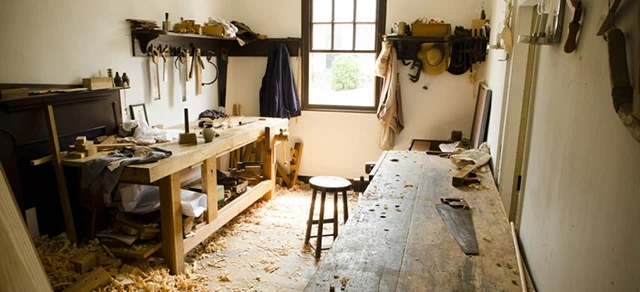By Joshua Farnsworth
Every project has different requirements for assembling, gluing, and clamping, but these videos can help with some basic tips. It’s important to have plenty of clamps so you don’t miss clamping a vital area of a project.
9.1 FASTENING
I used to think that using nails, and other fasteners, wasn’t part of traditional woodworking. But then I took a week-long class at Roy Underhill’s “Woodwright School” and learned that cut nails and other fasteners is actually very traditional. And it’s appropriate for attaching tongue and grooved bottoms to chests and boxes. So now I love using cut nails! Traditional woodworking guru, Christopher Schwarz, talks about his use of cut nails in this interesting article. He also shares this video about how to prepare your cut nails to improve performance:
9.2 GLUING
Sure, this video is a bit cheesy, but has some fairly useful tips…I’ll share my own video shortly:
9.3 USING TRADITIONAL ANIMAL HIDE GLUE
9.4 CLAMPING
VIDEO: Here’s an introduction to different types of clamps. You can also see my clamps buying guide video and page.
Titebond (who makes Titebond 3, my glue of choice) shared this great video on appropriate clamping practices:
Shortcut to 10 steps:
- Step 1: Buy the Right Woodworking Hand Tools
- Step 2: Setup Your Workshop & Tool Storage
- Step 3: Learn how to Tune, Refurbish, & Sharpen Tools
- Step 4: Learn how to Use Woodworking Hand Tools
- Step 5: Learn how to Design Woodworking Projects
- Step 6: Learn how to Choose Stable, Strong, & Beautiful Wood
- Step 7: Learn how to Square & Flatten Rough Boards
- Step 8: Joinery: Learn how to Layout & Cut Joints
- Step 9: Learn how to Assemble, Fasten, & Glue-up
- Step 10: Learn how to Traditionally Finish the Wood

